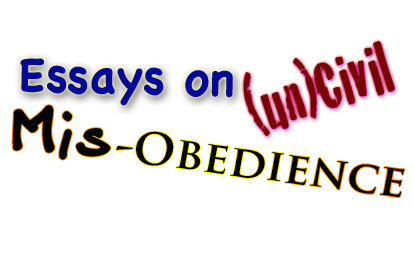

As technology evolves and the size of the world
virtually shrinks before our eyes, we can't help but
wonder about the future. Will it be better? How? Why?
And, most importantly, for who ? (or is it whom?)
Better for everybody or just the people who have it
great already? We all wonder. We should. It's important.
The idea that we are unwelcome or unwanted, even hated,
is among the most common human fears.
So how do we know we belong? Alas, we can only
go by social comparison, peers and just plain gossip. But
even vicious gossip doesn't get to everyone. To do that,
a statement has to be made in a way that we all have
access to and understand.
That would be the 'Arts'. The age-old way of
addressing the masses through all manner of creative
form. I literally mean every type of artistic communication,
from a Beethoven Sonata to 'Gone With the Wind' to the
local news, a Van Gogh or the essay you're reading now.
The main aspect all different forms of art and media share
is emotion. They all endeavor to elicit an emotion from the
audience. Tugging your heartstrings is at the essence of
art. If it doesn't make you feel something, you're not going
to remember it, much less be affected by it. In this way, the
Arts can also portray some basic aspects of society, such as
who's in charge, who's a jerk (often both are the same
person) or who's having a hard time and why.
We also use the Arts to alter history and public
opinion to hide our mistakes and hurt those we fear.
Art and media have long been major tools for those
trying to control, change or just plain rip off society at
large. Everyone from kings and Popes to that Nazi idiot
with the stupid little mustache has used emotion to shape
the arts to control people and affect their opinions or
spark their feelings. (As I have just done here.)
I pick on the most noted evil jerk of the 20th
century because he used an emotion (hate) to advance his
own agenda (supreme power) through racism (the
persecution of the Jews). Even now, I'm emotionally
tapping your loathing for him. I use an insult instead of
a name because I want you to share an emotion with me,
like we have something in common, even though we've
never met. This is not an inherently evil thing. The
ability to wield emotion is the most basic skill of the
storyteller. It is the glue that binds the audience and the
tale. It carries all the details of the story, from set-up to
conflict to resolution. And man, do we need that
resolution.
You see, emotional politics obscure any facts or
realities that don't help one side or the other. The funny
thing about truth is, if you don't know it, your chances of
doing something really stupid are greatly increased.
(Probably exponentially.) Any fact that you are unaware
of can hurt you or change your plan. Or maybe just
change what you think or feel about something. Maybe
you see a movie about something really awful that
happened a long time ago, and you see a parallel to
yourself in the hero or victim. This movie will probably
hold your attention and you'll remember and believe
much of the storyline's information as fact. But whether
you're actually being educated or hoodwinked depends on
one of of the Arts' most critical tools.
Perspective.
Perspective is crucial. It builds the the stage for a
message. It provides the position from which a subject will
be observed. Most importantly, it gives shape and priority
to the details and facts in the artform. This is the point
where the message is truly delivered to the audience. The
message is rarely just blurted out. It's more often carried
by an emotion you're encouraged to feel. The strongest of
the feelings that will reach your heart immediately are
sympathy and (dammit) anger.
My favorite current spin on reality is the constant
justification of crime and violence by an individual
because of suffering or abuse the 'hero' has endured. I
can't count how many films, TV shows and books are
about a guy who's been wronged or done wrong, breaking
the law in the name of justice by going after whoever done
him wrong or done wrong with him. We fall for it and
cheer him on.
Gimme a break. Every crook on the planet is not
Jean Val Jean. (Don't be shy- go read the book.)
Minorities, women (especially single mothers),
handi-capped, even children are portrayed in such a
heart-tugging manner that we actually root for them to
break the law and reap their vengeance. By using a
character type that the public knows is abused or
oppressed, a writer saves half of the work effort. The
sympathy and anger vehicles are simply built into the
main characters, leaving the author to merely concoct a
dramatic scenario. Sound like any movies you've seen?
Racism, sexism and child abuse are very popular themes.
They provide a wide range of positive or negative plot
choices. The problems are real, so the daily paper
practically writes the story by itself. The writer just has to
pick an attitude and spin the facts so it rings true and the
hero or heroine wins.
It doesn't matter if our intentions are good or bad.
When we choose the facts or details we're going to present
according to the opinion we wish to express, we are no
longer using the Arts to just tell a story. Admit it, we'd be
using art to manipulate our audience and we'd be
intentionally doing it by the emotional weight of the facts
we use. This basic technique works as fearfully well with
lies and half-truthes as it does with the real thing.
Yes, you can advance a good and positive idea that
actually helps folks and gets rid of an annoying problem at
the samen time. Using the same techniques as the
charlatains you abhor, the truth and good things will sell
just as well as the lies, and alot longer.
Trust me- the longer dollar goes with the deeper good.
previous essay Table of Contents next essay